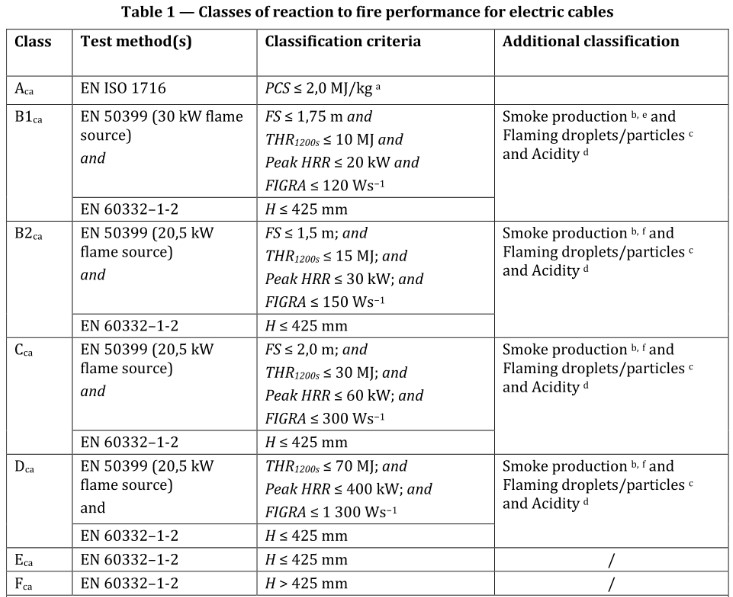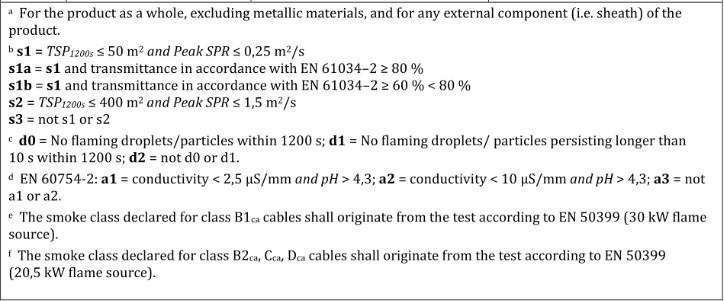
CALEDONIAN
Professional Cable Provider
Quick Contact

The CPR (Construction Products Regulation) – defines as construction product all those products designed to be permanently incorporated into construction works, in the broadest sense, not only considering building but also civil engineering works.
Most cables designed for permanent installation within domestic, residential and commercial buildings are subject to the Construction Products Regulation (CPR), covered by BS EN 50575. This is a legal requirement in EU countries.
Cables have been considered as construction products, and they are the only electrical products classified as construction products. Therefore, power, telecommunications, data and control cables are included. Cables designed for connecting appliances or for internal wiring of equipment or electrical appliances, and all those cables that are not used as cables for construction.
The CPR regulates and establishes the characteristics that construction materials must satisfy with respect to fire. Therefore, the cables are only affected by the safety specifications in the case of fire (resistance and reaction to fire) and hazardous substances (emission and content). The other technical characteristics are defined in the regular standards.
The regulation classifies products into one of seven classes, but in most instances, only five classes will apply to cables. Classes Fca and Eca undertake a basic vertical flame test to BS EN 60332-1-2. If there is a high level of flammability, it would be classified to Class Fca. However, for the cable to meet the requirements of Class Eca, the test has to be conducted with limited flammability by a Notified Body (NB).
Classes Dca, Cca and B2ca also apply to cables. Like Class Eca, the tests are conducted by a Notified Body. At Classes Cca and above, the factories manufacturing the cable will be regularly audited and cables retested by an approved third party. It is unlikely that many cables will meet the requirements of Class B1ca and Aca, simply due to the materials they are made of.
| Code | Reaction level | Performances |
| Aca | No reaction | |
| B1ca | Very low reaction | Non-flame propagator - Non-fire propagator (1,75m).Very low heat emission |
| B2ca | Low reaction | Non-flame propagator - Non-fire propagator (1,5m). Low heat emission |
| Cca | Reduced reaction | Non-flame propagator - Non-fire propagator (2m), Reduced heat emission |
| Dca | Improved reaction | Non-flame propagator Improved heat emission |
| Eca | Basic reaction | Non-flame propagator |
| Fca | Undetermined |
This classification provides information about the opacity of the emitted smoke (s=smoke)
| Code | Smoke emission performance |
| S1 | Smoke emission >Performance |
| S1a | Trasmittance >80% |
| S1b | Trasmittance >60% Trasmittance <80% |
| S2 | Average smoke production and propagation |
| S3 | None of the above |
This classification provides information about the dripping of burning material during the fire (d=droplet)
d0 = No burning droplets or particles
d1 = No burning droplets or particles that last more than 10seconds
d2 = none of the above
This classification provides information about the emission of acid gasses during the fire (a= acidity)
a1 – Conductivity <2,5 µS/mm and pH >4.3;
a2 - Conductivity <10 µS/mm and pH >4.3;
a3 – none of the above


We can define fire resistance as the capacity of a cable to maintain the electrical service of an installation during a fire. The greater fire resistance of a cable, the easier it will be to keep the emergency services in operation and therefore, permit evacuation. The standard that will develop this aspect is still in its draft phase.
Finally, the declaration of hazardous substances, their emission and content, indicates which components and in what proportion they are emitted in normal conditions of use, not of fire, by the cables, in order to preserve the environment. The fact that the content of hazardous substances has been taken into account will be indicated in the DoP of each product, although no criteria have yet been defined to determine them.
By way of conclusion, of the three aspects contemplated by the CPR, the most relevant one at this time is fire reaction, and including but not limited to the declaration of hazardous substances. The fire resistance aspect is still pending legal development.